Urbanism / Global
Streets ahead
Talk of a pandemic-induced exodus from city living has been overegged but there’s always room for improvement in even our most-treasured urban areas. Here we spotlight 10 initiatives from around the globe that could help to kick-start a fresh civic renaissance.
1.

Concept: A shared approach to cultural capital
Example: Vilnius, Lithuania
The past year has encouraged many to keep their distance but neighbourhoods shouldn’t shy away from sharing their resources. Lithuania’s capital, Vilnius, has taken the idea to another level with its extended library service.
When Lithuanian literary critic Jurga Mandrijauskaite-Ruskiene saw a mobile library in Linz, Austria, a few years ago, she decided to donate something similar to Vilnius, her home city. “I wanted to give people the joy of reading and the discovery of new authors,” she says. Vilnius Skaito (“Vilnius Reading”) was quickly embraced by residents who were happy to have free access to some of the latest book releases in several languages.
Every summer 1,000 neatly stacked books line the shelves of a stand in central Lukiskes Square. Beanbags, deckchairs and hammocks are scattered in the shade of mature trees to form a relaxed alfresco reading room, and when the weather turns cold there are two smaller branches indoors that remain open year-round. The books are donated by publishers, authors and even ambassadors, who offer literature from their countries. The line-up is curated anew every year. In 2020 a shelf was given over to self-help titles to help readers deal with anxiety caused by the pandemic.
“The reading room is visited by up to 800 people a day,” says Mandrijauskaite-Ruskiene. “People tell me that they like being in the city centre, on the grass, under the trees. They say that there is a good energy here and call this place the heart of the city.”
2.
Concept: Design individual housing from existing stock
Example: The Netherlands
The response to housing shortages in many of the world’s cities is often to demolish and rebuild. But there is another way: utilising abandoned or run-down buildings. For an example of how this can work, look to The Netherlands.
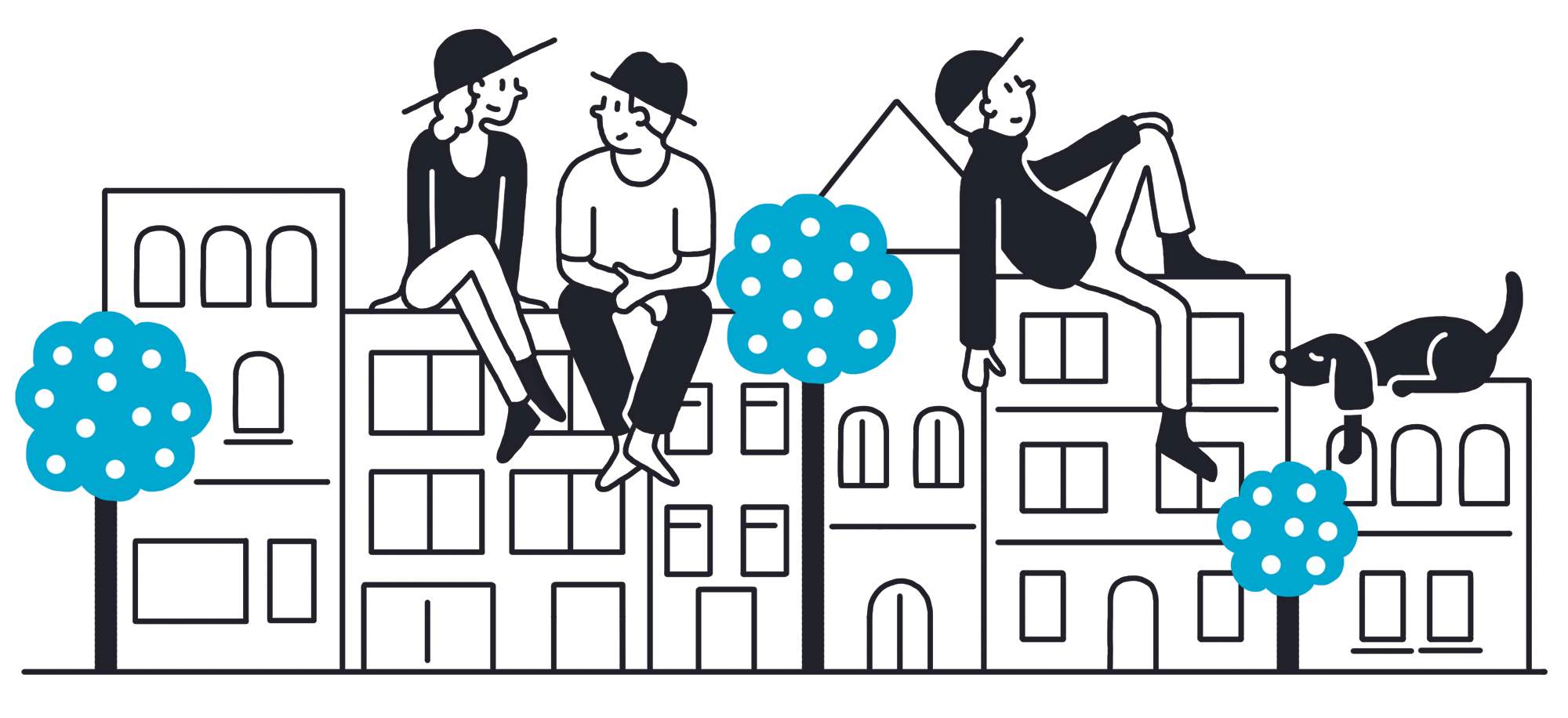
Every city has its defunct churches or prisons, bankrupt shops and empty office blocks, as well as countless residential plots in a state of disrepair. Rather than just being eyesores, these buildings can represent an opportunity for councils that can offer them as low-cost housing to young people and families. This can boost urban density in a gentle, sensitive way and provide an organic route to regeneration, pulling in people from different socio-economic backgrounds to counter the ghettoisation that can occur in poorer parts of cities.
The Dutch klushuizen (diy houses) programme involves a partnership between local authorities and homebuyers who are seeking a challenge. In return for inexpensive, structurally sound property, residents start from a blank slate and renovate with funds taken entirely out of their own pockets. Unsurprisingly, the scheme often attracts architects and designers looking for a space to make their own.
The model was pioneered in Rotterdam in 2005 and has since been picked up and rolled out all over the country, with hundreds of unique apartments created out of empty lofts and old classrooms, sometimes scooping up design awards in the process. Groups of strangers often club together to buy larger sites and forge whole new communities, something that’s also happened in a similar model in Germany known as Baugruppen (building group). Tenants or owners have even built shared communal spaces such as kitchens and workspaces in addition to their own living quarters. The smart alternatives to constructing from scratch show that, with a little creativity, there’s still room in our cities for high- quality homes.

3.
Concept: Encourage street commerce
Example: North America
Cities should make space for kiosks, pop-ups and restaurants on the pavement, encouraging permanent structures while trusting venues and citizens to keep safety in mind.
North American cities embraced alfresco dining in 2020. New York and Toronto are among those to have converted streets, traffic lanes and parking spaces into outdoor patios, providing a lifeline for businesses.
Some of these new outdoor spaces are haphazardly thrown together but others are more professional and intended for the longer term. Brooklyn-based studio Fantástica has designed a series of smart, modular outdoor structures that can safely seat and serve customers in parking spots or street lanes while protecting them from oncoming traffic. Meanwhile in Chicago, the Winter Design Challenge is an open competition asking residents to conceive plans to make outdoor dining feasible despite the city’s frigid winters.
Good cities aren’t born of car-centric streets; they should cater for people and outdoor commerce too.
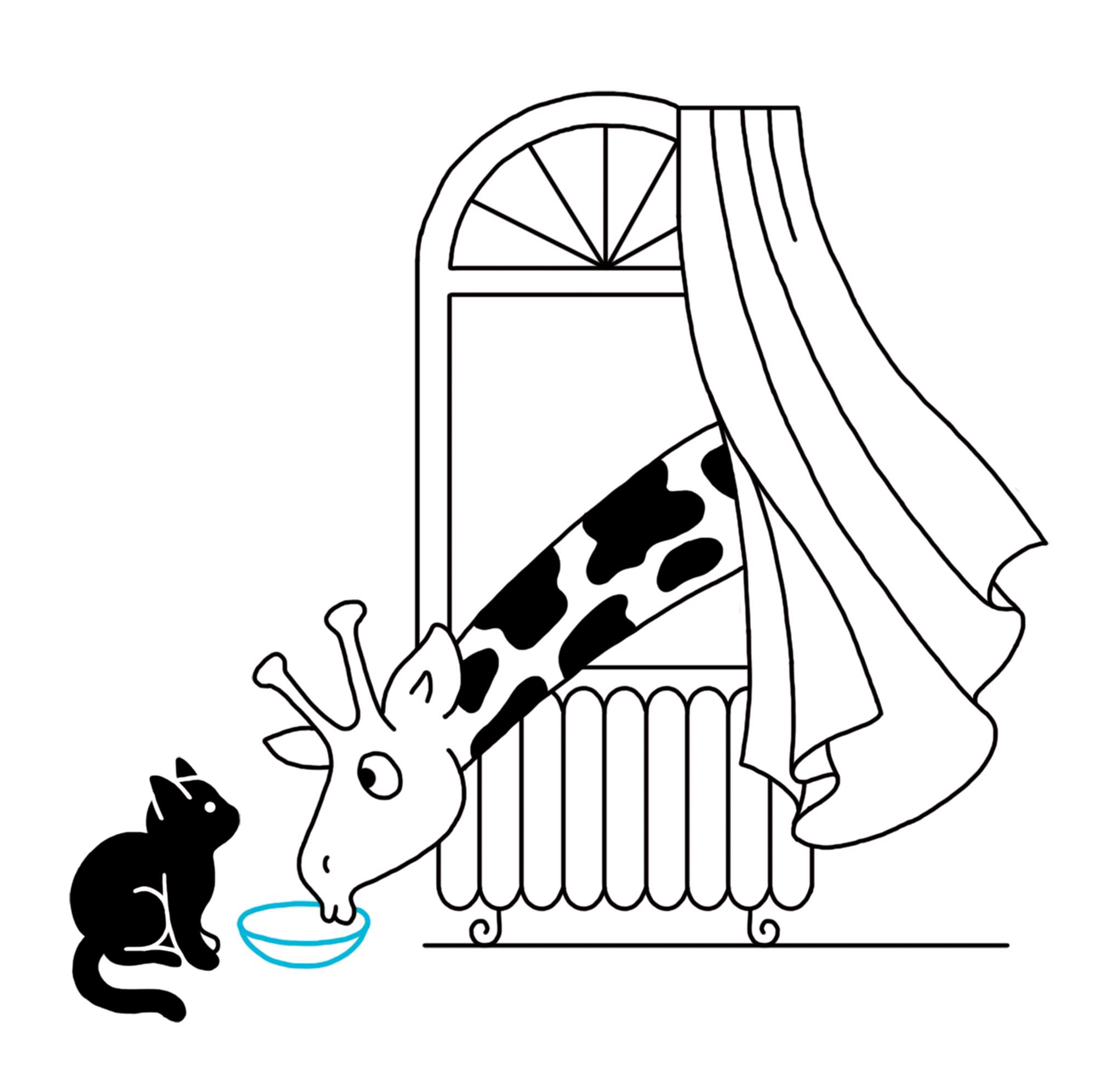
4.
Concept: Animal-friendly infrastructure
Example: Australia
Global lockdowns emboldened wildlife living near our urban centres, from dolphins in the Italian port of Cagliari to pumas in Santiago. Cities would do well to ensure this wasn’t a one-off.
How do we encourage city wildlife? For starters, existing animal habitats need to be protected: trees should be planted along roads, rocks and logs added to parks, and bird boxes installed. Construction needs to change too; indeed, the US is altering its building codes to protect birds, millions of which die every year when they fly into windows.
Another way to help animals is to link these habitats. For evidence, look to Australia, where the federal government is supporting an initiative to create animal crossings under and over busy highways. Taking the form of bridges and tunnels that are bedecked with native plants, the crossings “become a living part of the wider ecosystem,” says Darryl Jones, a behavioural ecologist from Queensland’s Griffith University. The crossings form a connection between the wild and the urban, “which is exactly as it should be,” he says.
5.
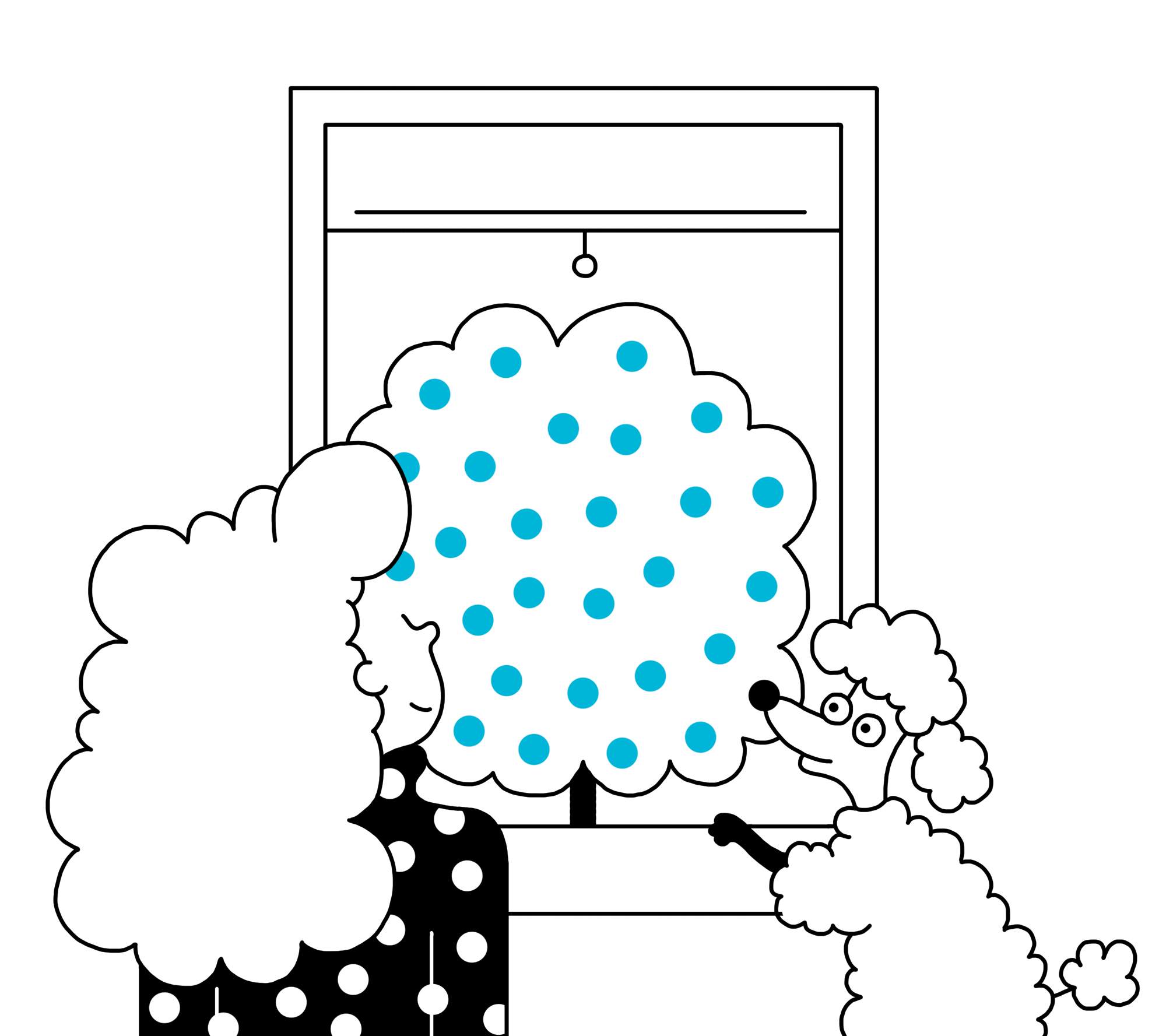
Concept: Keep it at eye-level
Example: Frederiksberg, Denmark
Tall towers reduce the vitality of streets. Developments on the lower floors offer better opportunities to connect buildings to the buzzy street below. Consider a stoop or a courtyard – and more trees to improve the view.
Frederiksberg is Denmark’s most densely populated district but this autonomous municipality in Copenhagen is also dense with trees: more than 6,000 line its streets. In fact, a sixth of the area is covered in greenery.
To improve the wellbeing of its residents while adding a touch of green beyond its many parks, Frederiksberg decided that every household must be able to see a tree. “We are the capital’s green heart,” says the district’s mayor, Simon Aggesen, who is proud of the policy that his predecessor introduced two years ago. He encourages citizens to contact the local authority if they are not able to see a tree from their window.
Aggesen says that planting saplings on Frederiksberg’s roads is not only an aesthetic exercise. “Planting trees contributes to biodiversity and helps to decrease urban heat.” The policy requires that only a maximum of 15 per cent of new trees belong to the same species and it offers protection for all trees older than 25. The mayor is counting on nature to keep the community healthy. “It is the greenery that makes Frederiksberg what it is.”

6.
Concept: Mark history with those who felt its impact
Example: Berlin
Memorials aren’t just about marking a past occasion, they can be cherished community spaces. New uses for historical monuments should reflect the wishes of those who were affected by the event.
How we remember the past, be it through statues or memorials, was a contentious theme in 2020. Berlin, where history is everywhere, is a good place to look for some solutions. The latest example is the Mauerpark, a stretch of land that ran between the two walls separating East and West Berlin, which has been transformed into a lively community park with a weekend market.
What started in the 1990s as a community-led initiative soon developed into a more ambitious city-aided regeneration project designed by Berlin architect Gustav Lange. It aims to reflect “the many different layers of history that come together here,” says Christoph Schmidt of the Grün Berlin foundation. Complete with a new playground, sculptured benches and a flower garden, it’s a sign that history is best preserved when tailored to the preferences of those who lived it every day.

7.
Concept: Listen to all citizens
Example: Dar es Salaam, Tanzania
Though our cities must be designed and built by experts, their work should involve robust engagement with the community. City officials, planners and architects should listen to all of their constituents.
Dar es Salaam in Tanzania is a city in which children are injured on roads at a rate that’s twice the global average. To address this, the non-profit Amend and its Sarsai engagement project pairs schools with councils and road engineers who work together to create footpaths, zebra crossings and speed humps to make the streets safer. This work wouldn’t have been carried out without Amend representing the community’s interests, says programme director Ayikai Poswayo. “We provided the link between the community’s needs and the people in offices who make decisions.”
By listening to Amend, authorities gained a better understanding of the challenges facing its citizens and, in making the changes, helped to gain their trust. It’s a lesson that all cities could learn; if your own isn’t home to an organisation that champions public interest, perhaps it’s time to start one yourself?

8.
Concept: Bridge the generation gap
Example: Japan
Aside from the practical help that having relatives close at hand offers the elderly, multi-generational living is good for the young and working parents too.
Rather than shunting the elderly off to live alone, surely it’s better to involve them in society.Japanese design studio Nendo recently built Stairway House in Tokyo for three generations of the same family. It’s a dramatic proposition: a three-storey building with a glazed façade and a broad concrete stairway running through the middle of the house. The grandparents have the rooms on the ground floor, while the upper floors are for the younger couple and their child. The two households are independent, yet the open staircase keeps them connected. Nendo describes the house as a “space where all three generations [can] take comfort in each other’s subtle presence”.
Other architects have come up with alternative answers to the question of finding privacy in a shared space. It’s a sign that multi-generational living – and caring for the elderly – can be applauded and encouraged.
9.
Concept: Take a temperature check
Example: Ljubljana
As cities get hotter, we’ll need places to cool off. City planners should consider providing shades, awnings, fountains and somewhere to take a dip – as well as buildings that favour a breeze over air-con.
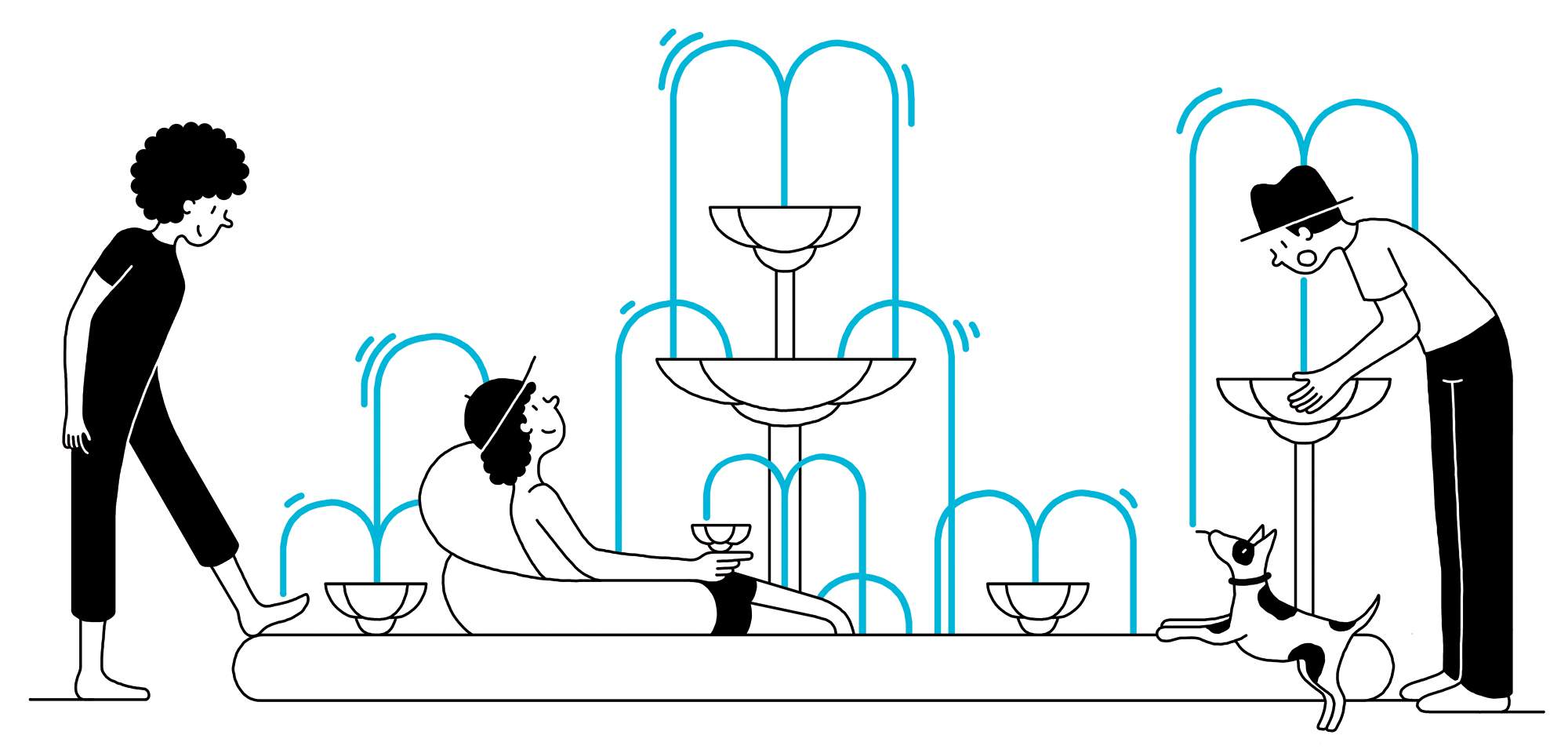
Slovenia’s capital, Ljubljana, faces a serious challenge in keeping its cool. A study in 2019 by the Swiss Federal Institute of Technology in Zürich suggested that its summer temperatures would be 8c hotter by 2050, which is a greater leap than any other city in the world. Ljubljana’s own projections are slightly less extreme, forecasting a 2.5c rise. Either way, the city needs to take action now to avoid overheating in the future.
Appropriately the municipal authorities are looking to water for solutions. Stand-up paddleboarders, kayakers and rowers already enjoy the picturesque Ljubljanica river that winds its way through the city’s historical centre. And they might soon be joined by swimmers diving off the riverside terraces as a city project to improve sanitation coverage should make the Ljubljanica clean enough for swimming in before 2025.
Even on dry land, thirsty types are never too far from a water source. A smartphone app points the parched towards dozens of drinking fountains in the city centre. And just to prove that it is still a truly green capital, Ljubljana now makes tree planting and “green roofs” a condition for many construction permits. After all, finding a place in the shade is wonderful at any time of the year.
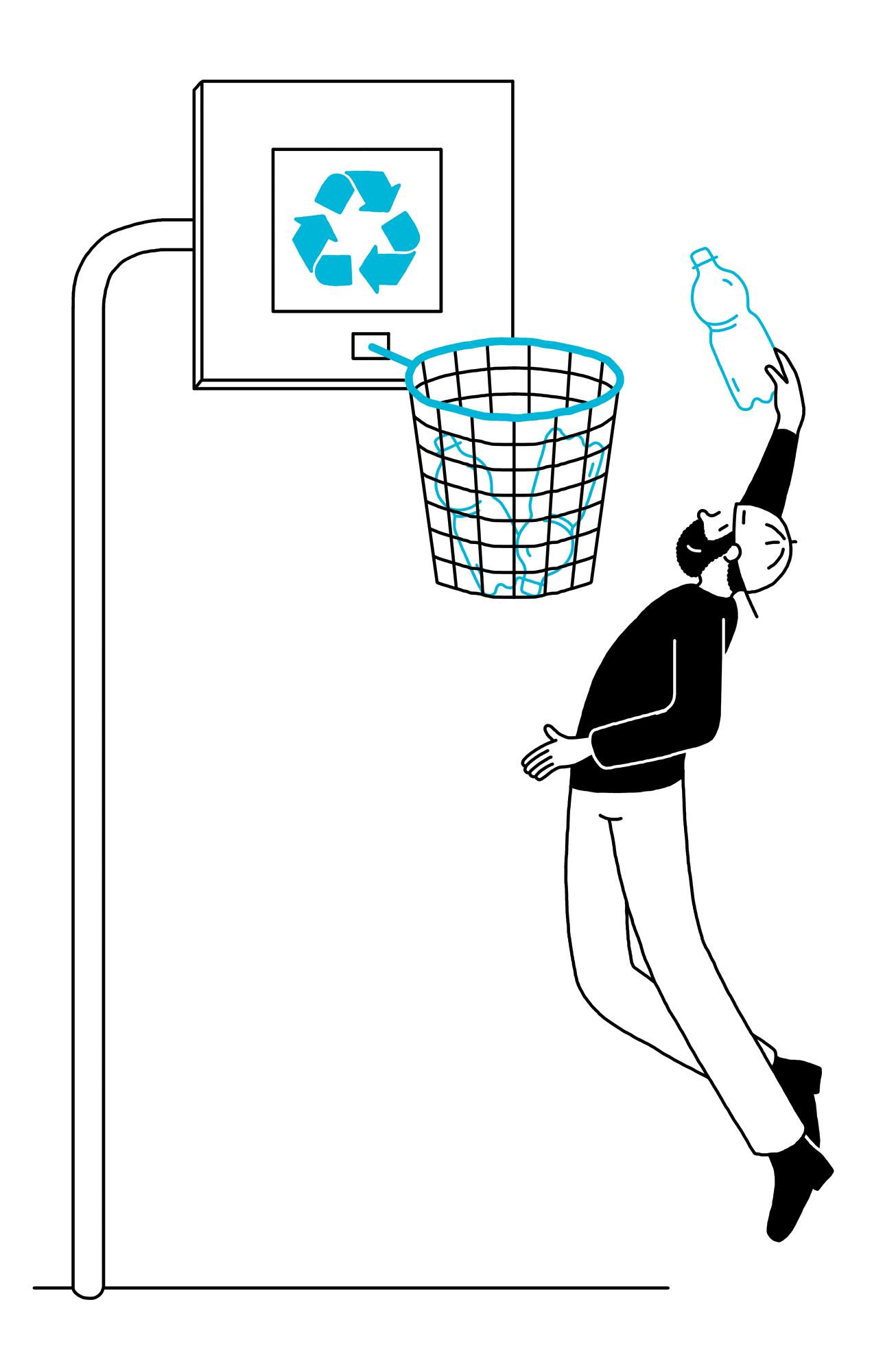
10.
Concept: New ways to keep streets clean
Example: Bangkok
Keeping the streets clean should involve the whole community. What about offering jobs to the homeless and including volunteers in the process? That’s what’s happening in Bangkok.
With their bright yellow aprons, hard hats and pastel-coloured brooms, teams of elderly Thais are cleaning the elevated pavements around Bangkok’s Victory Monument. They’re part of a growing group of homeless people employed by the Mirror Foundation, one of Thailand’s leading charities.
Under a new scheme called Hire Me, the foundation gathers individual donations through a fund, then pays homeless people to clean streets and public buildings. Programme head Benjamas Pangam says that the idea arose from street work that the foundation did with homeless people. “Many of them kept telling us they wanted jobs; asking if there was any work they could do for us. Most are over 50 and lack specific skills, so we thought about simple work, such as cleaning.”
Having launched in July, the foundation’s growing roster now numbers about 80 people. Many of them tidy facilities for civic government but there is growing demand from the private sector too. “It seems many people want to hire elderly homeless people to clean their places,” says Pangam. Even if a daily income of 400 to 500 baht (€11 to €14) might not be enough to cover housing, “it gives them a chance to buy food and essentials, along with encouragement and a reason to live their lives,” says Pangam.


